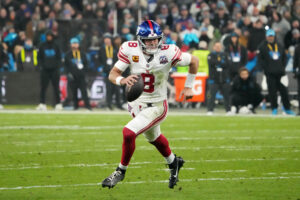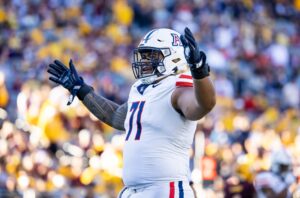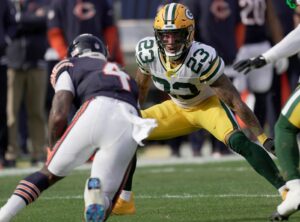Working our way through the AFC East in this new installment, we take a look at what the Miami Dolphins do on both sides of the ball.
The Breakdown: A Look at the Miami Dolphins Schematic Philosophy
Efficiency and Optimization of Weapons
Adam Gase enters his his second season at the helm, having posted a 10-6 record with a wild card berth this past season. His stops in Denver and Chicago contributed to each franchise’s success and it appears he can provide the tools for the Dolphins-and their quarterback-to take the next step.
Ryan Tannehill has been an undeniably polarizing quarterback, a bag of mixed opinions that I believe is a natural talent who may have finally put it together. Miami has wisely structured the offense around with Gase as the head man and the weapons at his disposal, both working hand-in-hand. Gase’s heavy incorporation of screens play into what the Dolphins have in Jarvis Landry and Kenny Stills, twitchy receivers who can do damage in the open field, exploit defenses and assist in additional yardage with the ball in their hands.
Such screens also help keep the offense on-schedule and allow Gase to package in designed runs or bubbles known as (you guessed it) packaged plays that can make a defense wrong even when they’re right. These screens further open the door for RPOs (run-pass options) that Tannehill can thrive with because of his athleticism and running ability. What’s more, these packaged plays will turn into lethal attacks when the defense decides to overcommit to the quick-hitters underneath as they will tag their inside slot receiver with a seam route that attacks the open voids like such.

Creating specific matchups and mismatches are a staple of all passing games, but few are as diverse as Gase. He draws inspiration from the West Coast system he was an assistant under with the Lions and 49ers just as often ass he does from Air Coryell concepts he helped incorporate with Mike Martz during their time with the Bears. The cornerstone of his philosophy is creating said matchups through pre-snap motion, flood concepts that give them the numerical advantage and simplified progressions that allow quarterbacks to stay on schedule with the quick-strike nature of the system.
Unbalanced 3×1 formations are the base of what Gase has built where it’s three receivers to one side and a tight end as the solo option on the other side of the formation. This is a wise move when you have the likes of Stills, Landry, DeVante Parker and new tight end Julius Thomas who had his best seasons under Gase in Denver. Gase isn’t averse to lining his tight ends up on the trips side, but the unbalanced aspect-along with the pre-snap motion and shifts-forces the defenses to show it hand coverage wise, which in turn tells the quarterback where his progression begins.
The motion aspect is noticeably prevalent when attempting to achieve the ideal matchups that often include working to wider formations that stretch the defense and creating a one-on-one scenario outside or putting his number one receiver as the inside slot man, leaving him matched up on a linebacker. Further, Gase constructs a number of vertical concepts that act as clear outs to get his athletic tight ends in space or against linebackers in zone.
As for the run game, Gase keeps things relatively simple with his heavy dosage of outside zone that best suits Jay Ajayi‘s vision and press-and-cut skills. What’s most notable is how often they run out of their trips sets with the tight end on the backside. Having three receivers to one of the side of the field forces the defense to move with the receivers, thus preventing them from outnumbering the offense in the box and further providing the offense with a gap advantage.
That isolated tight end keeps their formation honest and provides the offense with a sixth blocker who can line up in-line or a reduced split, just like he would if they were throwing the ball. In essence, that’s why Miami felt comfortable swapping former left tackle Branden Albert for Thomas as Albert lacked the movement skills to thrive in their screen/outside zone game which required him to succeed in space and along the perimeter. Those are areas where projected left tackle Laremy Tunsil can truly make a difference. Thomas is also a viable receiving threat and reliable run blocker albeit one who has battled a litany of injuries. Look for the offense to continue their theme of big plays.
Changes and Consistencies
With Vance Joseph now the head man in Denver, linebackers coach Matt Burke was promoted to defensive coordinator. He earned his chops coaching linebackers under Jim Schwartz during their tenure with the Detroit Lions and will likely incorporate the same zone-based defense.
Zone defense simply can’t survive without an effective pass rush, hence why the Dolphins brought in William Hayes, extended Andre Branch and spent their first round pick on Missouri edge rusher Charles Harris; the Dolphins added further depth with the selection of defensive tackles Vincent Taylor and Davon Godchaux, a wise decision that adds more pass rushers to the equation.
The Dolphins are based around wide nine fronts that ask the defensive end to control the D-gap (located outside the tight end) and force runs back into the heart of the defense, while asking them to pin their ears back and bend the corner when rushing the passer. This is where the Harris selection makes complete sense. He spent the majority of his time rushing as a seven-technique and wide nine end with the speed to compliment his lengthy strides up the arc with the fluidity in his hips to swivel-and-go and bend the edge. Cameron Wake is now 35 and may see a diminished role, but should his pass rushing prowess remain opposite Harris, the two bookends are going to give quarterbacks trouble.
Miami also didn’t shy away from rotating between an over and under front in their 4-3 scheme, but it was clear they favored the under front because it puts three-technique Ndamukong Suh to the strength where he can eat double teams to force runs backside and rely on his quickness to slash the B-gap. Behind them, Miami has shifted the arrangement of their linebackers to better-suit their respective strengths. They brought in Lawrence Timmons to man the middle as he can defend A-gap runs with his stack-and-shed skills as former MIKE linebacker Kiko Alonso shifts over to WILL where runs will automatically funnel right to him in the wide nine front, supporting his slashing style that makes him so disruptive. Having his quickness on the boundary should lead to a jump in both tackles and tackles-for-loss. This leaves second round pick Raekwon McMillan as the preferred SAM option as a 40 ‘backer (positioned directly above the tackle) or stacking the tight end where he will be asked to disrupt their releases and take on the point-of-attack with his ability to slip blocks.
The Dolphins added safeties Nate Allen and T.J. McDonald and drafted cornerback Cordrea Tankersley in the third round, so it’s safe to assume they will be exotic with their coverage looks. However, expect the Dolphins to feature a load of single-high looks where Reshad Jones can rely on his hyper-aggressiveness. With the talent in the secondary and the right pieces in the front seven, the Dolphins will likely incorporate a bevy of coverage rotations and shifts to support their blitzes.






